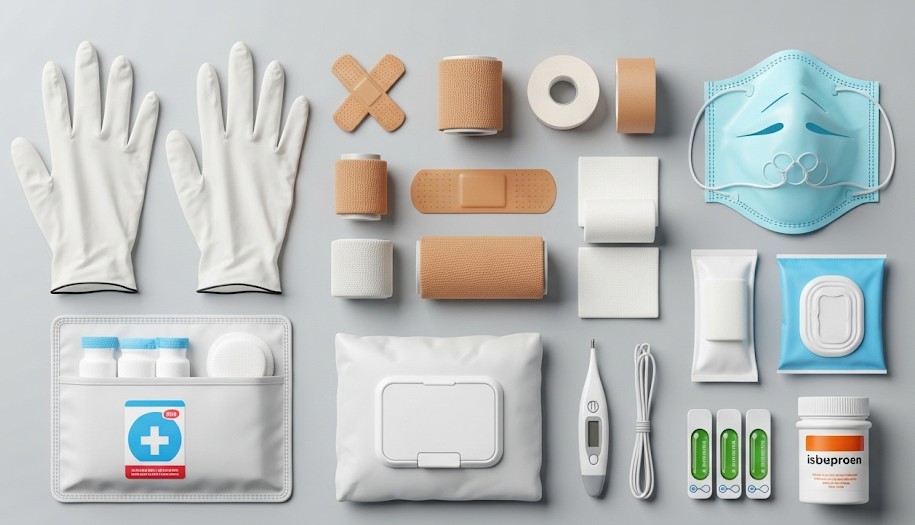Home Medical Kit: Beyond Band-Aids

Objective
Build a home kit prioritizing life threats and common injuries with clear layout and response order.
Kit Layout
- Trauma: tourniquet, pressure bandage, hemostatic gauze, chest seals.
- Wounds: gauze, tape, irrigation syringe, antiseptic.
- Meds: pain/fever reducer, antihistamine, loperamide, ORS.
- Tools: gloves, shears, tweezers, thermometer, flashlight, CPR barrier.
Response Steps
- Scene safe; gloves on.
- MARCH: control bleeding; airway; breathing; circulation; keep warm.
- Irrigate and dress wounds; tape properly.
- Document TQ time, meds, allergies, events.
Storage & Checks
- Bright, labeled case in accessible spot.
- Quarterly restock and flashlight test.
Real Example
Kitchen cut managed with irrigation and pressure dressing; urgent care later. Pre-built “bleed kit” cut response time in half.
Checklist
- TQ (CAT/SOF-T), pressure bandage, hemostatic gauze
- Chest seals, triangular bandage
- Gauze pads/rolls, antiseptic, tape
- Gloves, shears, tweezers, thermometer, flashlight
- Common meds + dosing chart
Contingencies
- Bleed persists → second TQ proximal; pack wound.
- Anaphylaxis → epinephrine auto-injector; call EMS.
After-Action
Log what you used; restock and update the kit map inside the lid.
← Previous | All Articles | Next →
